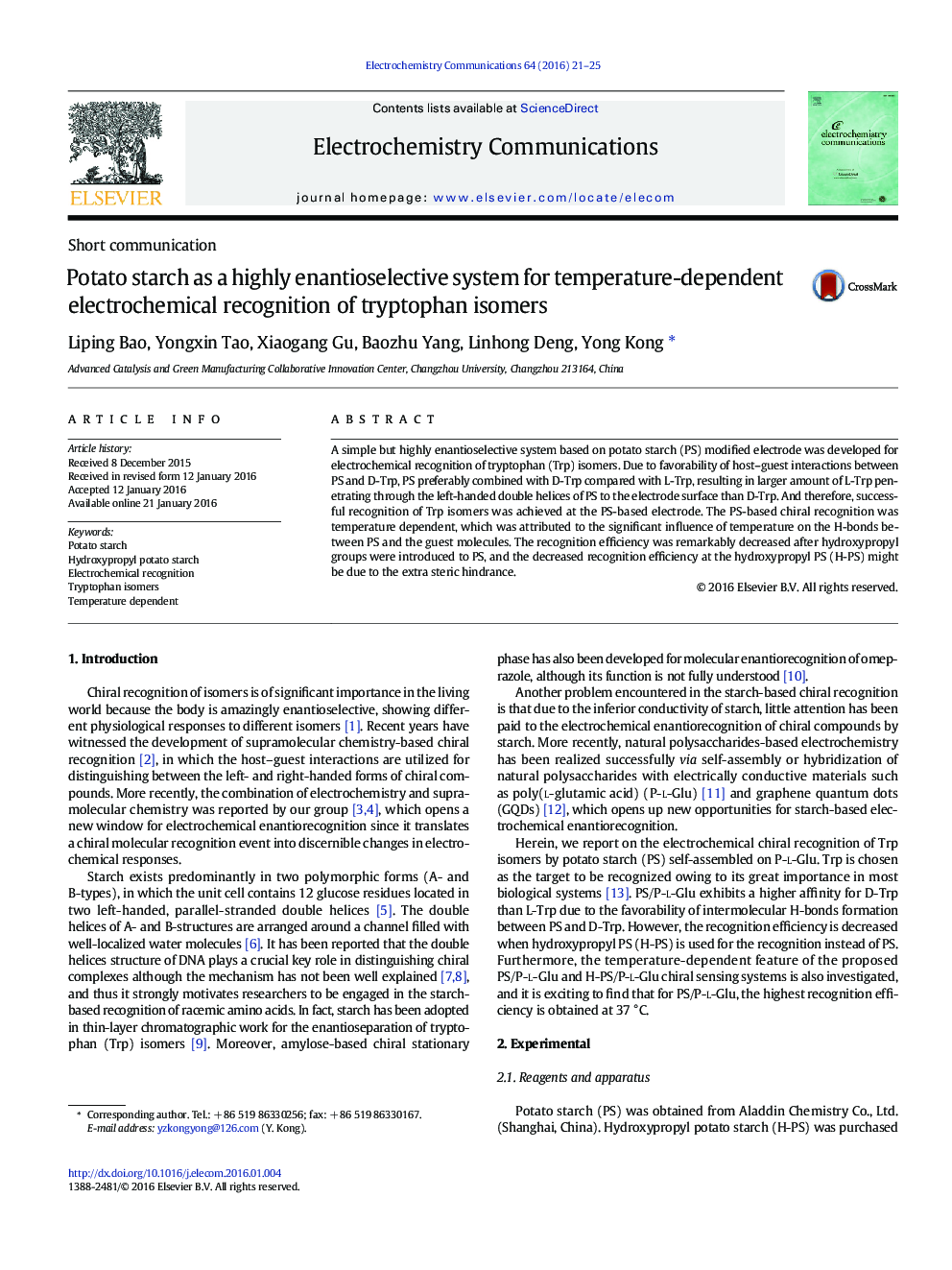| Article ID | Journal | Published Year | Pages | File Type |
|---|---|---|---|---|
| 178748 | Electrochemistry Communications | 2016 | 5 Pages |
•PS is used for electrochemical recognition of chiral compounds for the first time.•The recognition is temperature dependent due to the effect of temperature on H-bond.•The recognition is remarkably deteriorated at H-PS due to the extra steric hindrance.•The PS-based system opens a new avenue for chiral recognition of Trp isomers in vivo.
A simple but highly enantioselective system based on potato starch (PS) modified electrode was developed for electrochemical recognition of tryptophan (Trp) isomers. Due to favorability of host–guest interactions between PS and D-Trp, PS preferably combined with D-Trp compared with L-Trp, resulting in larger amount of L-Trp penetrating through the left-handed double helices of PS to the electrode surface than D-Trp. And therefore, successful recognition of Trp isomers was achieved at the PS-based electrode. The PS-based chiral recognition was temperature dependent, which was attributed to the significant influence of temperature on the H-bonds between PS and the guest molecules. The recognition efficiency was remarkably decreased after hydroxypropyl groups were introduced to PS, and the decreased recognition efficiency at the hydroxypropyl PS (H-PS) might be due to the extra steric hindrance.
Graphical abstractDue to the favorability of intermolecular H-bonds formation between PS and D-Trp, the PS-based enantioselective system exhibits higher affinity for D-Trp than L-Trp, and therefore effective electrochemical recognition of Trp isomers is achieved successfully.Figure optionsDownload full-size imageDownload as PowerPoint slide
